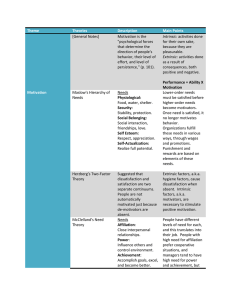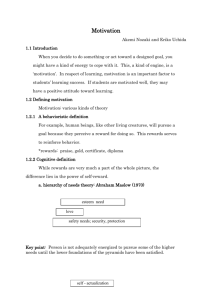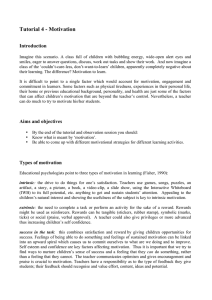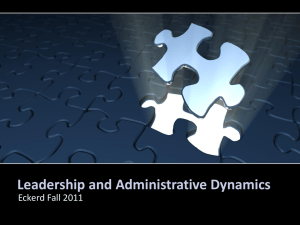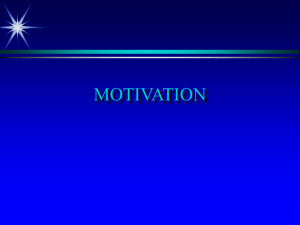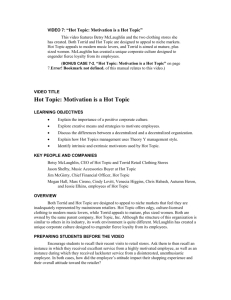Intrinsic-Extrinsic Motivation
advertisement
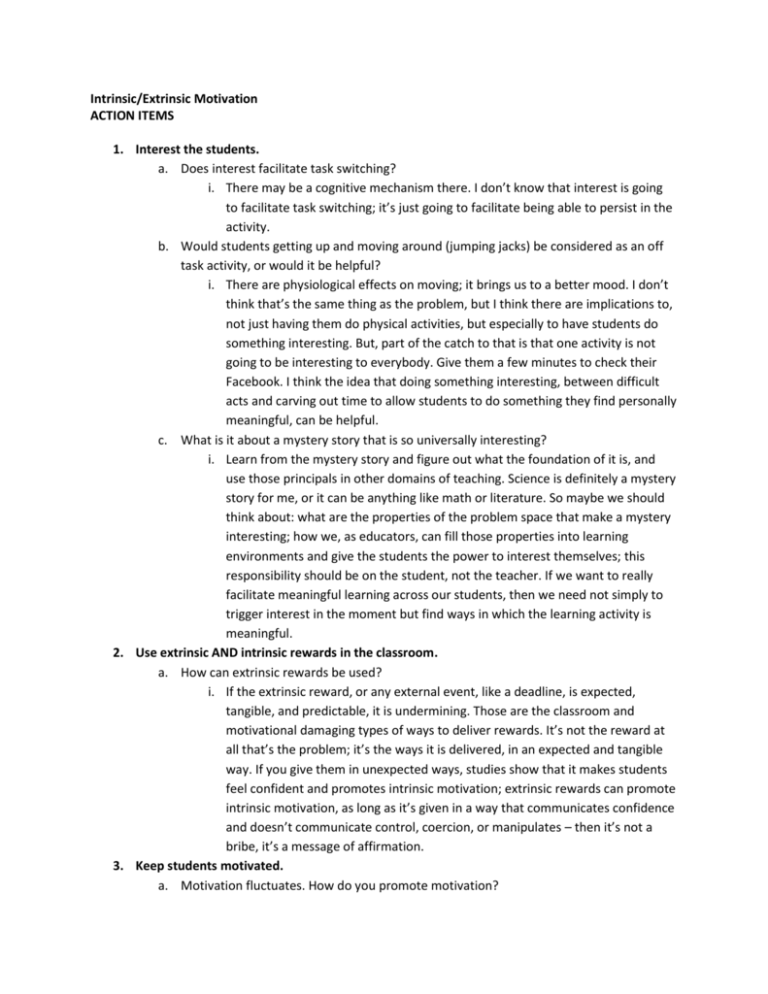
Intrinsic/Extrinsic Motivation ACTION ITEMS 1. Interest the students. a. Does interest facilitate task switching? i. There may be a cognitive mechanism there. I don’t know that interest is going to facilitate task switching; it’s just going to facilitate being able to persist in the activity. b. Would students getting up and moving around (jumping jacks) be considered as an off task activity, or would it be helpful? i. There are physiological effects on moving; it brings us to a better mood. I don’t think that’s the same thing as the problem, but I think there are implications to, not just having them do physical activities, but especially to have students do something interesting. But, part of the catch to that is that one activity is not going to be interesting to everybody. Give them a few minutes to check their Facebook. I think the idea that doing something interesting, between difficult acts and carving out time to allow students to do something they find personally meaningful, can be helpful. c. What is it about a mystery story that is so universally interesting? i. Learn from the mystery story and figure out what the foundation of it is, and use those principals in other domains of teaching. Science is definitely a mystery story for me, or it can be anything like math or literature. So maybe we should think about: what are the properties of the problem space that make a mystery interesting; how we, as educators, can fill those properties into learning environments and give the students the power to interest themselves; this responsibility should be on the student, not the teacher. If we want to really facilitate meaningful learning across our students, then we need not simply to trigger interest in the moment but find ways in which the learning activity is meaningful. 2. Use extrinsic AND intrinsic rewards in the classroom. a. How can extrinsic rewards be used? i. If the extrinsic reward, or any external event, like a deadline, is expected, tangible, and predictable, it is undermining. Those are the classroom and motivational damaging types of ways to deliver rewards. It’s not the reward at all that’s the problem; it’s the ways it is delivered, in an expected and tangible way. If you give them in unexpected ways, studies show that it makes students feel confident and promotes intrinsic motivation; extrinsic rewards can promote intrinsic motivation, as long as it’s given in a way that communicates confidence and doesn’t communicate control, coercion, or manipulates – then it’s not a bribe, it’s a message of affirmation. 3. Keep students motivated. a. Motivation fluctuates. How do you promote motivation? i. It’s the same way in asking how do you promote fear, anger, disgust; it’s a universal question. It doesn’t matter the starting point, if you’re high or low, if you’re in the middle of class, or if you’re depleted… all of these kinds of things. What is it that stimulates the Anterior Insula activity - what classroom conditions do we do? We tried to identify what those are, pass that knowledge on: give them a challenge, give them a curiosity inducing question, or give them suspense. If you’re in the middle of a lecture and you notice the students in that low-motivation zone, then show them a two-minute video that will spike their motivation and get them interested again.

